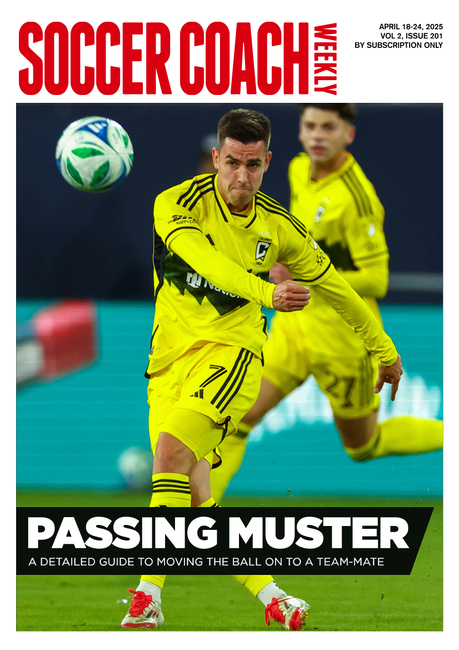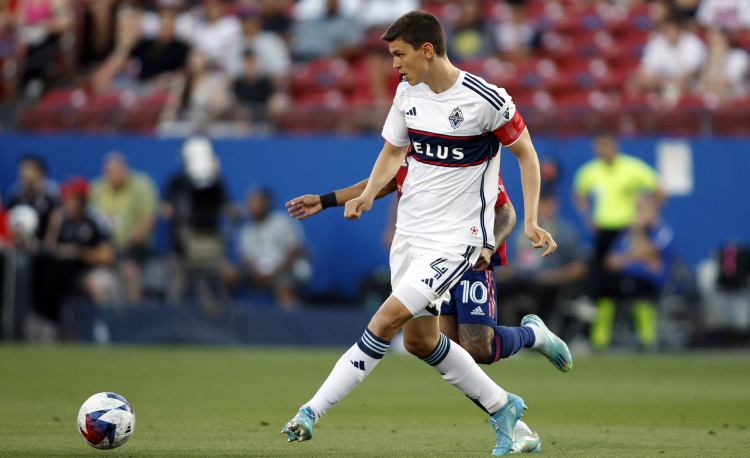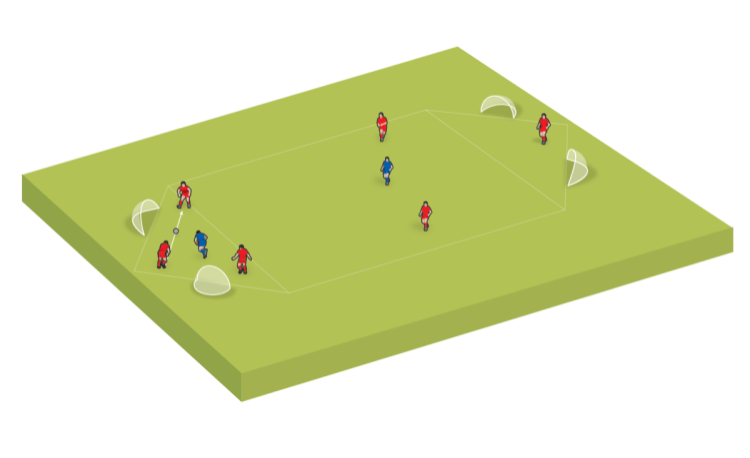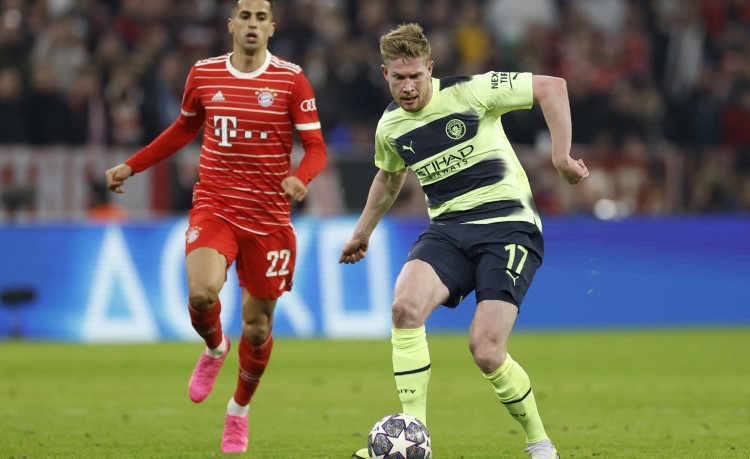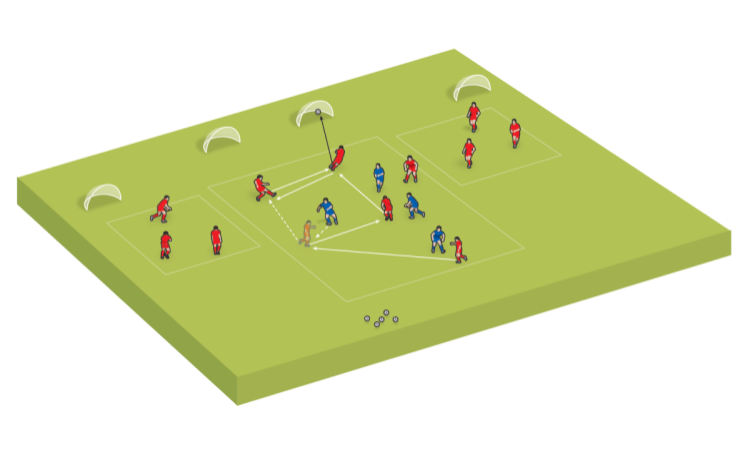Moving to nine-a-side: a rough guide
Brentford FC Foundation coach JAMES BROOKS talks to SCOTT MOWBERRY about the jump from seven-a-side and getting players thinking about the game
Two weeks ago on these pages, we looked at the challenges faced by a team moving from five-a-side youth soccer to seven-a-side.
This week, we focus on the natural next step - from seven-a-side to nine-a-side.
Scott Mowberry, from the excellent Soccer Coaching Podcast, has been speaking to James Brooks, an FA Level 2 coach who works for the Brentford FC Foundation.
He discusses the differences between the two formats, how he has tried to develop thought processes as well as techniques and his tips for coaches making the step up…
SM: What did you do at seven-a-side that you thought might be useful for nine-a-side?
JB: “At seven-a-side, I was very structured in how we approached training and games. Everybody knew it would be full rotation and equal game time.
"I produced a plan I would send out to parents on a Saturday that would say this boy is playing this position, he’s playing between these minutes, then he’s going to come off and he’s going to come back on in this position.
"The same boy could play at the back and up front one week, the next week they might play left midfield or in goal as well.
"As much as I wanted to develop their technique and ability on the ball, I wanted to develop their brain and thought process equally.
"I produced player development cards, looking at individual things they could work on, handing them out to them and asking the parents to work alongside them - ’can you spend 20 minutes with them in the garden a couple of times a week and work on these things?’.
"I did positional cards as well - so if you go and play in a particular position, all I’m looking for you to do is three or four things.
"I’m not asking you to be equally as brilliant at left back as you are at right midfield, for example. But what I want you to do is focus on these few things when you’re in this position.
"When we moved into nine-a-side, it become slightly different - there’s more space on the pitch. But the idea was that they would understand more the different positions that they play and the jobs they needed to do.
"I wanted to develop their technique but I wanted to develop their brain equally..."
"Nine-a-side brought different challenges, but the idea was if I can develop their thinking around the game, even at a basic level, then it will benefit them once they transition not just from seven-a-side to nine-a-side, but through nine to 11-a-side as well."
SM: Did you have nine-a-side in mind at that time?
JB: "The positional cards were definitely transferable. At seven-a-side, I think we played two at the back, with three in midfield and one up front, but I kept everything as defence, midfield and attack.
"When we went to nine-a-side, I toyed around with a couple of different formations, but they knew as a defender, as a midfielder or as an attacker, these are my jobs.
"Because these are 10- and 11-year-old boys, you don’t want to go into too much specifics. But what is the job of a defender? To recognize danger. What is the job of a midfielder? To appreciate space. What is the job of a forward? To understand opportunities and how you can create space for someone else."

SM: Did you have an overarching playing philosophy at seven-a-side? Was it one you shared with the players or did you just try to nurture it through training and matches? For nine-a-side, did it evolve?
JB: "It transferred through seven and nine-a-side. I wanted us to dominate possession, be comfortable on the ball and move the opposition.
"Particularly in the last season of seven-a-side and the first season of nine-a-side, that worked really well for us.
"I banned us from putting the ball in the air. The goalkeeper played out from the back and set pieces, unless in a shooting position, had to be played on the floor.
"Everything was done to ensure the boys had the maximum amount of touches of the ball as possible, and that transferred into the first season of nine-a-side.
"I think in the two seasons we played nine-a-side, albeit Covid interrupted ones, we only lost three games. I certainly had more comments than I expected from other coaches to say we really liked the way you play football."
SM: How did matches differ at nine-a-side?
JB: "We moved from equal game time to minimum game time. So for a 50-minute game, boys in the first year of nine-a-side would be guaranteed 35 minutes - when we moved to an hour, they were guaranteed 40 minutes.
"I wanted to put more of an emphasis on game time being earned, because that’s football, but also guaranteeing a minimum level of game time so that they had enough time on the pitch to support their development.
"We spoke to the parents about it and there didn’t seem to be much pushback."
"I wanted us to be comfortable on the ball. I banned us from putting it in the air..."
SM: What surprised you most about nine-a-side?
JB: "Boys started to have growth spurts at that point and on a bigger pitch, I always felt we couldn’t compete as well physically as other teams at that point.
"I used to think, ’What can I do? Can I change the formation? Maybe we need to stop playing out from the goalkeeper? Maybe we need to start going out wide? How do we get up the pitch quicker?’.
"I’d dwell on all these points and it was silly, looking back. I think I got too wrapped up in the right formation or the right way to play, rather than knowing your boys and what they’re good at.
"I did get there eventually. But that was a big surprise for me, how I adapted to nine-a-side, probably more so than the boys."
SM: If you had to give some tips to coaches that were transitioning from seven to nine-a-side, looking back now, what might they be?
JB: "What I found, going from seven to nine-a-side, was you can really get them thinking more about the game.
"I’ve always focused on trying to make them aware of the game. I used to say, "What part of our body do we play football with?’. And at first, they’d say ’our feet’, and I’d say ’no, we play with our brain’.
"For me, the thinking player beats the technical player - appreciating space when you’re in possession, appreciating where to run, appreciating when to drop off to receive the ball, appreciating how to get the ball forward quickly, when you’re out of possession, appreciating where the danger is and appreciating when you need to tuck in nullify space.
"I think nine-a-side is a really good platform for them to understand the game in its purest form, 11-a-side."
Related Files
Newsletter Sign Up
Coaches Testimonials
Subscribe Today
Discover the simple way to become a more effective, more successful soccer coach
In a recent survey 89% of subscribers said Soccer Coach Weekly makes them more confident, 91% said Soccer Coach Weekly makes them a more effective coach and 93% said Soccer Coach Weekly makes them more inspired.
*includes 3 coaching manuals
Get Weekly Inspiration
All the latest techniques and approaches
Soccer Coach Weekly offers proven and easy to use soccer drills, coaching sessions, practice plans, small-sided games, warm-ups, training tips and advice.
We've been at the cutting edge of soccer coaching since we launched in 2007, creating resources for the grassroots youth coach, following best practice from around the world and insights from the professional game.


